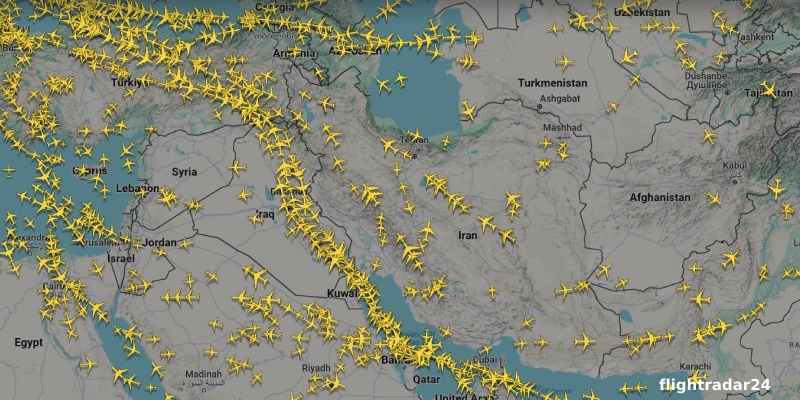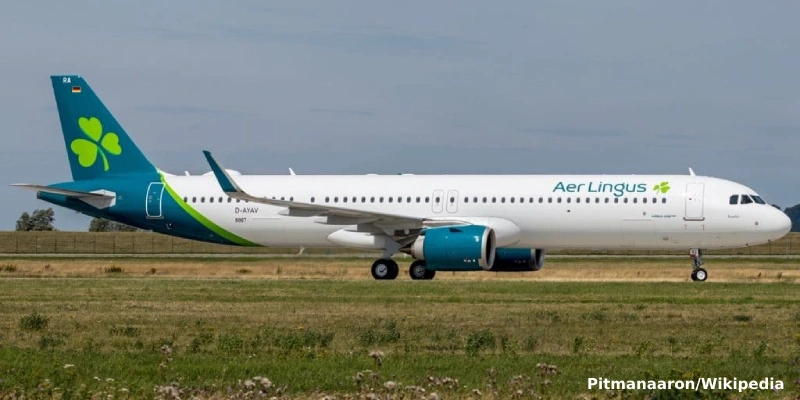The rise in global conflict zones is straining the operational and financial margins of airlines. With last-minute route changes, canceled flights, and growing security risks, industry leaders warn of a scenario that tests the aviation sector’s ability to respond.
“Planning flights in this environment is extremely difficult… The airline industry relies on predictability, and its absence drives up costs,” says Guy Murray, Head of Safety at TUI Airline.
Restricted Skies, Longer Routes, and Higher Costs
Airspace restrictions continue to expand. Closures around Russia, Ukraine, the Middle East, India, Pakistan, and parts of Africa have drastically reduced routing options for many airlines.
Mark Zee, founder of OPSGROUP, emphasizes that “compared to five years ago, over half the countries overflown on a typical Europe-Asia route now require detailed analysis before each flight.”
Recent clashes between India and Pakistan led to mutual airspace blockades, forcing multiple airlines to redesign their routes. Isidre Porqueras, Director of Operations at IndiGo, notes that these detours undermine progress in emissions reduction and operational efficiency.
Skies Shared with Drones and Missiles
Since October 2023, the Israel-Palestine conflict has exposed commercial flights to missile and drone attacks, some visible to passengers and crew. Russian airports, including those in Moscow, have temporarily closed due to drone activity, while GPS spoofing or jamming has increased in geopolitically unstable regions.
→ Global Passenger Traffic Grows 8% in April, Reports IATA
The Worst-Case Scenario: A Downed Aircraft
Beyond economic impact, the civil aviation sector’s greatest fear is a commercial aircraft being struck by weaponry. This risk, unfortunately, is not hypothetical.
In December, an Azerbaijan Airlines plane was shot down in Kazakhstan, killing 38 people. According to Azerbaijan’s president and Reuters sources, the incident was attributed to Russian air defense. In October, another cargo plane was downed in Sudan, resulting in five fatalities.
Since 2001, six commercial aircraft have been shot down, with three near-miss incidents narrowly avoiding tragedy, according to Osprey Flight Solutions data.
Safety Depends on Shared Information
For Willie Walsh, Director General of IATA, the key lies in greater government cooperation: “We need states to share information more effectively to maintain aviation safety in conflict zones.”
Although statistics show a sustained decline in accidents over the past two decades, conflict-related incidents are not counted in these figures. In February, IATA stated that risks tied to war zones demand urgent global coordination.
Divergent Policies, Shared Risks
Each airline determines its routes based on government advisories, safety recommendations, and operator agreements. This leads to disparate policies and varying routes for similar risks.
Since the 2022 closure of Russian airspace to Western carriers, airlines from China, India, and the Middle East have maintained shorter northern routes, giving them a competitive edge over Western counterparts.
A case in point is Singapore Airlines’ SQ326 flight between Singapore and Amsterdam. In just over a year, its route has changed at least three times, per Flightradar24. Last month, it diverted again to avoid Pakistan during clashes with India, opting instead for a path over the Persian Gulf and Iraq.
The Pilots’ Perspective
Flight crews also face growing concerns. Paul Reuter, Vice President of the European Cockpit Association, warns that commercial pressures may cloud judgments about flying over conflict zones. “IATA says airlines—not regulators—must decide if it’s safe to fly. But history shows economic pressures can influence decisions,” he says.
Despite this, IATA clarifies that crews retain the right to refuse a flight if they feel unsafe. “Most airlines don’t want a crew member onboard if they’re not confident,” concludes Nick Careen, IATA’s Senior Vice President.
Related Topics
Southwest to Open New Crew Base in Austin, Creating Over 2,000 Jobs
Aer Lingus to Fly Between Dublin and Pittsburgh Starting May 2026
Royal Air Maroc Announces First Non-Stop Service Between Casablanca and Los Angeles
BlueHouse: JetBlue to Open Its First VIP Lounge at New York’s JFK Airport

Plataforma Informativa de Aviación Comercial con 13 años de trayectoria.




